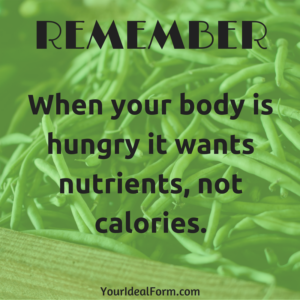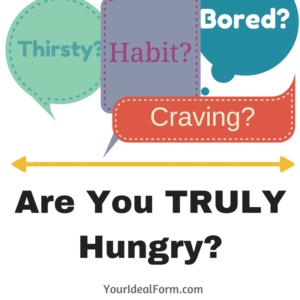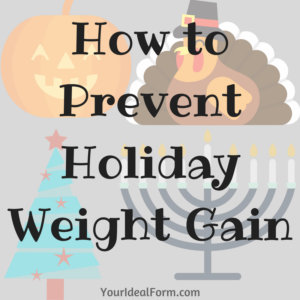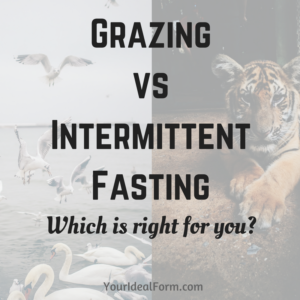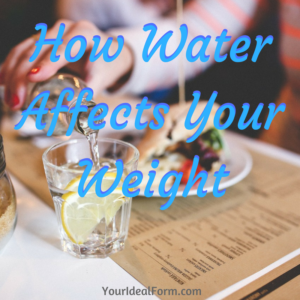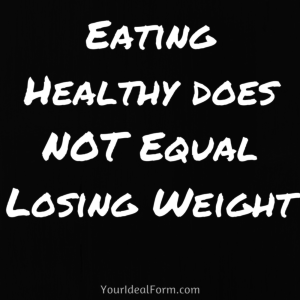
Saying you are going to eat healthy to lose weight is a lot like saying you are going to eat “less”. It’s rather nebulous. What constitutes “healthy” foods? Even the government doesn’t know. Not to mention, guidelines seem to change constantly. First eggs are bad for you, then they are good for you, then they are bad for you again. Fat is bad, but then olive oil is good, and then coconut oil is the new olive oil, and we should all be eating avocados and almonds all the time because they are “good fats”. It gets very confusing very quickly.
It is possible to gain weight while eating a healthy diet. Weightlifters do this all the time. You can have too much of a good thing. It might be harder to overeat on salad, chicken breast, and rice, but it is possible. Then there is the caution around foods that seem healthy but really aren’t, like the 2000 Calorie salads at some restaurants. Or foods that start out healthy, (like a simple baked potato) but end up not healthy once you add condiments (such as butter, sour cream, cheese and bacon).
This is why it is so important to track what you are doing. You may think you are on the right road, but without accurate data, there’s no way of knowing if you are going in the right direction or not.
I also implore you to try not to get frustrated with ever-changing guidelines. That scientists are constantly doing studies and trying to learn more about how our bodies react to certain foods is a FANTASTIC thing! The more informed we are, the better decisions we can make to truly be healthy.
What healthy foods are you guilty of over-indulging in? Let me know in the comments! (For me, it’s grapes!)
